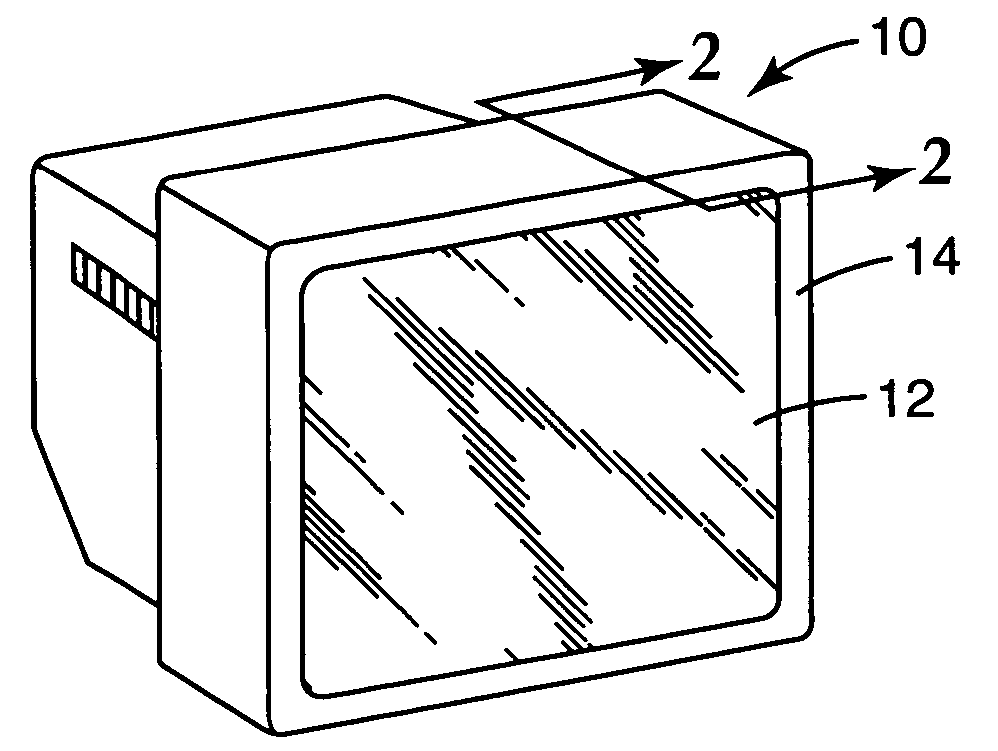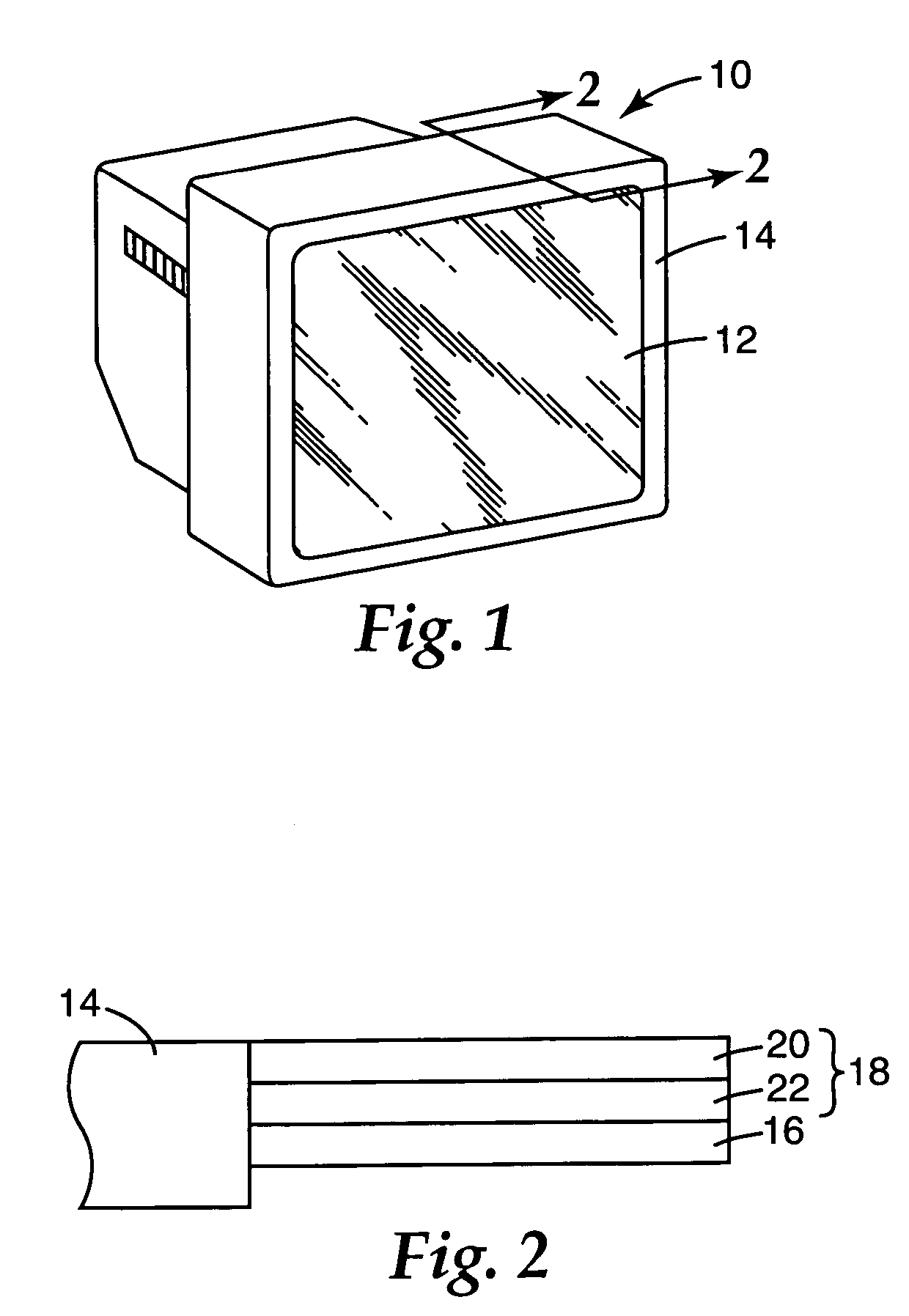Fluoropolymer coating compositions with olefinic silanes for anti-reflective polymer films
a technology of anti-reflective polymer and fluoropolymer, which is applied in the field of low refractive index fluoropolymer coating compositions, can solve the problems of reducing the surface energy of the coating layer, reducing the interfacial adhesion of the fluoropolymer layer to other polymer or substrate layers to which the layer is attached,
- Summary
- Abstract
- Description
- Claims
- Application Information
AI Technical Summary
Benefits of technology
Problems solved by technology
Method used
Image
Examples
example 1
Photocrosslinking / Photografting of Fluoropolymers
[0147] Fluoroplastic THV 220, Fluoroelastomer 2145 or Brominated Fluoroelastomer E-15742 were each dissolved individually in containers with either MEK or ethyl acetate at 10 weight percent by shaking at room temperature. The prepared fluoropolymer solutions were combined with one or more A174 or vinylsilane surface modified 20 nm sized silica particles as crosslinkers (Table 7) or alkoxysilyl substituted C═C double containing compounds / photografters (Table 8), in the presence of a photo-initiator, and without the presence of the amino-substituted organosilane ester or ester equivalent. The various compositions of coating solutions were allowed to sit in an airtight container. The solutions were then applied as a wet film to a PET or 906 hardcoated PET substrate. The coated films were dried in an oven at 100-120 degrees Celsius for 10 minutes.
[0148] Subsequently the films were subjected to UV (H-bulb) irradiation by 3 passes at the ...
example 2
Scratch Resistance Improved by Grafting Agents, Bonding Promoters, Alkoxysilyl Substituted Mono- or Multi-Functional Crosslinkers and Inorganic Nanoparticles
[0159] The above prepared fluoropolymer solutions were also combined with inorganic nanoparticles which had been surface modified by either 3-(trimethoxysilyl)propyl methacrylate or vinyltrimethoxysilane in various ratios. The fluoropolymer / nanoparticle solutions were further combined with TMPTA, MMA, aminosilane and a photo-initiator in various ratios. The various compositions of coating solutions (Table 8) were allowed to diluted to either a 3 or 5 weight percent solution and allowed to sit in a container. The reaction product was then coated at a dry thickness of about 100 nm using a number 3 wire wound rod as a wet film to a PET or hardcoated PET substrate. The coated films were dried in an oven at 100-140 degrees Celsius for 2 minutes.
[0160] Subsequently the films were subjected to UV (H-bulb) irradiation by 3 passes at t...
example 3
Refractive Index Measurements of Samples Showing Improved Scratch Resistance in Tables IV and V
[0165] For samples in Table 9 that showed improved scratch resistance, refractive index measurements were performed to confirm the resultant coatings usefulness as a low refractive index layer, wherein the measure refractive index is below 1.4.
[0166] As Table 9 indicates, each of the scratch resistant samples tested measured less than 1.4, and thus were suitable for use in a low refractive index layer of an antireflection film.
TABLE 9Refractive indices of such fluoropolymer films withimproved scratch resistanceFluoropolymer / Crosslinker / AdhesionGraftingPhoto-Wave-PromoterAgent / InitiatorlengthRefractive(95:5; W %)Monomer(1 w %)(nm)IndiceKE15742 / A1106Vinylsilane(5)1173533.5671.34570.01844(95)E15742 / A1106A174(15) / TMP1173533.5671.35560.02109(80)TA(5)E15742 / A1106A174(5)1173533.5671.37400.00856(95)E15742 / A1106Vinylsilane(10)1173533.5671.37770.0094(90)
[0167] Next, in Table 10, various coatings...
PUM
| Property | Measurement | Unit |
|---|---|---|
| Olefinic | aaaaa | aaaaa |
| Refractive index | aaaaa | aaaaa |
Abstract
Description
Claims
Application Information
 Login to View More
Login to View More - R&D
- Intellectual Property
- Life Sciences
- Materials
- Tech Scout
- Unparalleled Data Quality
- Higher Quality Content
- 60% Fewer Hallucinations
Browse by: Latest US Patents, China's latest patents, Technical Efficacy Thesaurus, Application Domain, Technology Topic, Popular Technical Reports.
© 2025 PatSnap. All rights reserved.Legal|Privacy policy|Modern Slavery Act Transparency Statement|Sitemap|About US| Contact US: help@patsnap.com



